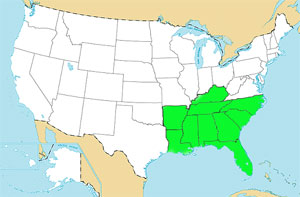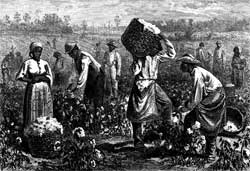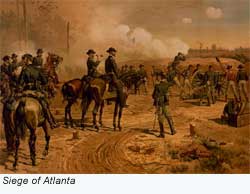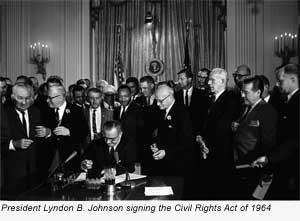 The Southern United States - commonly referred to as the American South or simply The South - constitutes a large distinctive region in the southeastern and south-central United States. Because of the region's unique cultural and historic heritage, including early European colonial settlements, the doctrine of states' rights, the institution of slavery and the legacy of the Confederacy during the American Civil War, the South has developed its own customs, literature, musical styles, and varied cuisines. The Southern United States - commonly referred to as the American South or simply The South - constitutes a large distinctive region in the southeastern and south-central United States. Because of the region's unique cultural and historic heritage, including early European colonial settlements, the doctrine of states' rights, the institution of slavery and the legacy of the Confederacy during the American Civil War, the South has developed its own customs, literature, musical styles, and varied cuisines.
 The predominant culture of the South has its origins with the settlement of the region by British colonists. In the 17th century, most were of English origins, but in the 18th century, large groups of Scots and Ulster-Scots (later called the Scots-Irish) settled in Appalachia and the Piedmont. These people engaged in warfare, trade, and cultural exchanges with the Native Americans already in the region (such as the Creek Indians and Cherokees). After 1700, large groups of African slaves were brought in to work on the large plantations that dominated export agriculture, growing tobacco, rice, and indigo. Cotton became dominant after 1800. The explosion of cotton cultivation made the "peculiar institution" of slavery an integral part of the South's early 19th century economy. The predominant culture of the South has its origins with the settlement of the region by British colonists. In the 17th century, most were of English origins, but in the 18th century, large groups of Scots and Ulster-Scots (later called the Scots-Irish) settled in Appalachia and the Piedmont. These people engaged in warfare, trade, and cultural exchanges with the Native Americans already in the region (such as the Creek Indians and Cherokees). After 1700, large groups of African slaves were brought in to work on the large plantations that dominated export agriculture, growing tobacco, rice, and indigo. Cotton became dominant after 1800. The explosion of cotton cultivation made the "peculiar institution" of slavery an integral part of the South's early 19th century economy.
 Two major political issues - protective tariffs and slavery - festered in the first half of the 19th century causing political alignment along sectional lines, and strengthened the identities of North and South as distinct regions. Seven cotton states decided on secession after the election of Abraham Lincoln in 1860. They formed the Confederate States of America. In 1861, they were joined by four more states. The United States government refused to recognize the seceding states as a new country and kept in operation its second to last fort in the South, which the Confederacy captured in April 1861 at the Battle of Fort Sumter, in the port of Charleston, triggering the Civil War. In the four years of war which followed, the South found itself as the primary battleground, with all but two of the main battles taking place on Southern soil. Two major political issues - protective tariffs and slavery - festered in the first half of the 19th century causing political alignment along sectional lines, and strengthened the identities of North and South as distinct regions. Seven cotton states decided on secession after the election of Abraham Lincoln in 1860. They formed the Confederate States of America. In 1861, they were joined by four more states. The United States government refused to recognize the seceding states as a new country and kept in operation its second to last fort in the South, which the Confederacy captured in April 1861 at the Battle of Fort Sumter, in the port of Charleston, triggering the Civil War. In the four years of war which followed, the South found itself as the primary battleground, with all but two of the main battles taking place on Southern soil.
 Nearly all southerners, black and white, suffered from the South's defeat in the Civil War. With the region devastated by its loss and the destruction of its civil infrastructure, much of the South was generally unable to recover economically until after World War II. The South was noted by President Franklin Delano Roosevelt as the "number one priority" in terms of need of assistance during the Great Depression, instituting programs such as the Tennessee Valley Authority in 1933. Locked into low productivity agriculture, the region's growth was slowed by limited industrial development, low levels of entrepreneurship, and the lack of capital investment. Nearly all southerners, black and white, suffered from the South's defeat in the Civil War. With the region devastated by its loss and the destruction of its civil infrastructure, much of the South was generally unable to recover economically until after World War II. The South was noted by President Franklin Delano Roosevelt as the "number one priority" in terms of need of assistance during the Great Depression, instituting programs such as the Tennessee Valley Authority in 1933. Locked into low productivity agriculture, the region's growth was slowed by limited industrial development, low levels of entrepreneurship, and the lack of capital investment.
 World War II marked a time of change in the South as new industries and military bases sprang up across many areas of the region providing badly need capital and infrastructure. People from all parts of the US came to the South for military training and work in the region's many bases and new industries. Farming shifted from cotton and tobacco to include soybeans, corn, and other foods. This growth increased in the 1960s and greatly acelerated into the 80's and 90's. Large urban areas with over 4 million people rose in Texas, Georgia, and Florida. Rapid expansion in industries such as autos, telecommunications, textiles, banking, and aviation gave some states in the South industrial strength to rival large states in the Northeast and Midwest. By the 2000 census The South along with the west was leading the nation in population growth. However, with this growth came long commute times and serious air pollution problems in cites such as Dallas, Houston, Atlanta, Miami, Austin, and industrial areas of North Carolina. World War II marked a time of change in the South as new industries and military bases sprang up across many areas of the region providing badly need capital and infrastructure. People from all parts of the US came to the South for military training and work in the region's many bases and new industries. Farming shifted from cotton and tobacco to include soybeans, corn, and other foods. This growth increased in the 1960s and greatly acelerated into the 80's and 90's. Large urban areas with over 4 million people rose in Texas, Georgia, and Florida. Rapid expansion in industries such as autos, telecommunications, textiles, banking, and aviation gave some states in the South industrial strength to rival large states in the Northeast and Midwest. By the 2000 census The South along with the west was leading the nation in population growth. However, with this growth came long commute times and serious air pollution problems in cites such as Dallas, Houston, Atlanta, Miami, Austin, and industrial areas of North Carolina.

Although the territory of the region is often disputed generally Alabama, Arkansas, Florida, Georgia, Kentucky, Louisiana, Mississippi, North Carolina, South Carolina, and Tennessee are always included. Virginia, West Virginia, Maryland and Delaware are also considered southern states but are also sometimes (including on this website) included in Mid-Atlantic states, while Oklahoma and Texas, both very much part of the South, are included in the Southwestern States section. The popular definition of the "South" is more informal and is generally associated with those states that seceded during the Civil War to form the Confederate States of America. Those states share commonalities of history and culture that carry on to the present day.
 Biologically, the South is a vast, diverse region, having numerous climatic zones, including alpine, temperate, sub-tropical, tropical, and arid. Many crops grow easily in its soils and can be grown without frost for at least six months of the year. Some parts of the South, particularly the Southeast, have landscapes characterized by the presence of live oaks, magnolia trees, yellow jessamine vines, and flowering dogwoods. Another common environment is the bayous and swampland of the Gulf Coast, especially in Louisiana. Biologically, the South is a vast, diverse region, having numerous climatic zones, including alpine, temperate, sub-tropical, tropical, and arid. Many crops grow easily in its soils and can be grown without frost for at least six months of the year. Some parts of the South, particularly the Southeast, have landscapes characterized by the presence of live oaks, magnolia trees, yellow jessamine vines, and flowering dogwoods. Another common environment is the bayous and swampland of the Gulf Coast, especially in Louisiana.

Perhaps the most famous southern writer is William Faulkner, who won the Nobel Prize in Literature in 1949. Faulkner brought new techniques such as stream of consciousness and complex narrative techniques to American writings.
 Other well-known Southern writers include Mark Twain (whose Adventures of Huckleberry Finn and Tom Sawyer are two of the most read books about the South), Zora Neale Hurston, Eudora Welty, Thomas Wolfe, William Styron, Flannery O'Connor, Carson McCullers, James Dickey, Willie Morris, Tennessee Williams, Truman Capote, Walker Percy and Robert Penn Warren. Other well-known Southern writers include Mark Twain (whose Adventures of Huckleberry Finn and Tom Sawyer are two of the most read books about the South), Zora Neale Hurston, Eudora Welty, Thomas Wolfe, William Styron, Flannery O'Connor, Carson McCullers, James Dickey, Willie Morris, Tennessee Williams, Truman Capote, Walker Percy and Robert Penn Warren.
Possibly the most famous southern novel of the 20th century is Gone with the Wind by Margaret Mitchell, published in 1937. Another famous southern novel, To Kill a Mockingbird by Harper Lee, won the Pulitzer Prize after it was published in 1960.
 In the century after Reconstruction, the white South strongly identified with the Democratic Party. This lock on power was so strong the region was politically called the Solid South. The Republicans controlled parts of the Appalachian mountains and competed for power in the border states, but otherwise it was rare for a Southern politician to be a Republican before the 1960s. In the century after Reconstruction, the white South strongly identified with the Democratic Party. This lock on power was so strong the region was politically called the Solid South. The Republicans controlled parts of the Appalachian mountains and competed for power in the border states, but otherwise it was rare for a Southern politician to be a Republican before the 1960s.
 Increasing support for civil rights legislation by the Democratic party at the national level during the 1940s caused a split between conservative Southern Democrats and other Democrats in the country. Until the passage of the Civil Rights laws of the 1960s, conservative Southern Democrats ("Dixiecrats") argued that only they could defend the region from the onslaught of northern liberals and the civil rights movement. The Democratic Party's dramatic reversal on civil rights issues culminated when Democratic President Lyndon B. Johnson signed into law the Civil Rights Act of 1964. Meanwhile, the Republicans were beginning their Southern strategy, which aimed to solidify the Republican Party's electoral hold over conservative white Southerners. Southern Democrats took notice that 1964 Republican Presidential candidate Barry Goldwater had voted against the Civil Rights Act, and in the presidential election of 1964, Goldwater's only electoral victories outside his home state of Arizona were in the states of the Deep South. Increasing support for civil rights legislation by the Democratic party at the national level during the 1940s caused a split between conservative Southern Democrats and other Democrats in the country. Until the passage of the Civil Rights laws of the 1960s, conservative Southern Democrats ("Dixiecrats") argued that only they could defend the region from the onslaught of northern liberals and the civil rights movement. The Democratic Party's dramatic reversal on civil rights issues culminated when Democratic President Lyndon B. Johnson signed into law the Civil Rights Act of 1964. Meanwhile, the Republicans were beginning their Southern strategy, which aimed to solidify the Republican Party's electoral hold over conservative white Southerners. Southern Democrats took notice that 1964 Republican Presidential candidate Barry Goldwater had voted against the Civil Rights Act, and in the presidential election of 1964, Goldwater's only electoral victories outside his home state of Arizona were in the states of the Deep South.
The transition to a Republican stronghold took decades. First, the states started voting Republican in presidential elections—the Democrats countered by nominating such Southerners as Jimmy Carter in 1976 and 1980, Bill Clinton in 1992 and 1996, and Al Gore in 2000. Then the states began electing Republican senators and finally governors. Georgia was the last state to do so, with Sonny Perdue taking the governorship in 2002. In addition to the middle class and business base, Republicans attracted strong majorities from the evangelical Christian vote, which had not been a distinct political demographic prior to 1980.
|
